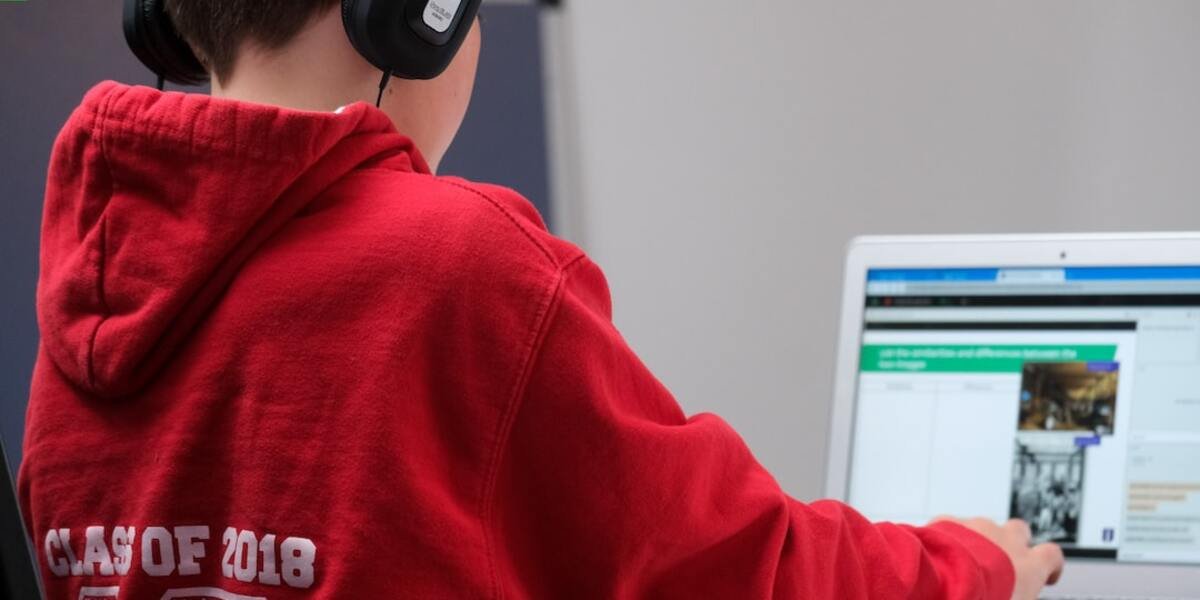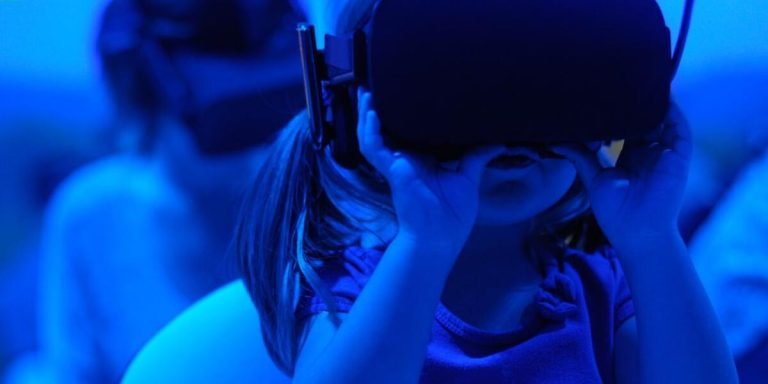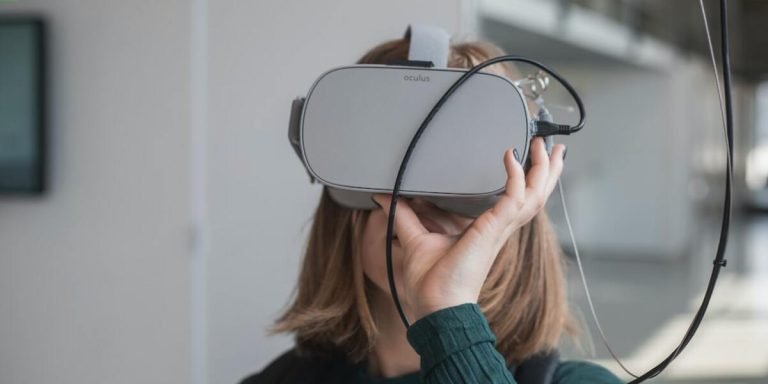Tools and Technology: Enhancing Early Childhood Education
In the realm of early childhood education, “tools and technology” have emerged as significant game-changers. The integration of appropriate educational technologies can revolutionize learning by making it more engaging, interactive, and inclusive for young learners.
This evolution in teaching methodologies not only facilitates a fun-filled learning environment but also aids educators in identifying individual strengths and weaknesses amongst their students. When applied effectively, these tools enhance cognitive development while encouraging curiosity and creativity – key components to a successful start on the education journey.
Did you know?
Did you know? The National Association for the Education of Young Children (NAEYC) reports that, when used intentionally and appropriately, technology and interactive media are effective tools to support learning and development in early childhood education.
The Role of Tools and Technology in Modern Classroom Settings
The role of tools and technology in the realm of contemporary education is becoming increasingly pivotal, as educators around the world navigate a digital landscape. Their influence stretches far beyond interactive whiteboards or tablets to include advanced software that enables unique teaching methodologies for enhanced understanding.
In today’s interconnected age, technological resources aren’t just extras; they’re integral components shaping pedagogical approaches while enriching learning experiences. These modern implementations connect learners globally, fostering comprehensive development by facilitating collaborative projects online or accessing information from multitudes of sources instantly.
Hence it’s clear—technology integration isn’t merely about using tools—it represents an innovative shift towards redefining learning paradigms, creating adaptable spaces where students can be active participants rather than passive recipients in their own process of knowledge acquisition.
Enhancing Learning Experiences through Digital Platforms
In the modern era, tools and technology have become pivotal in enhancing learning experiences. They are not just changing the way our educators teach but also how students absorb new information.
As classrooms move towards a more digital environment, we notice improved student engagement and interaction levels. Harnessing these technological platforms enables teachers to deliver tailored content that suits every learner’s pace of understanding while ensuring no one is left behind.
For example, with interactive whiteboards and projectors, lessons transform from mere note-taking sessions into dynamic presentations filled with visuals and demonstrations. This blend of audio-visual aids helps reinforce concepts effectively thereby impacting overall comprehension significantly.
The introduction of educational apps brings forth another dimension for integrating tools and technology in education as they cater to various modes of instruction – auditory or visual. These applications possess an array of informative videos, quizzes, puzzles designed differently catering each child’s unique needs thus aiding them retain knowledge better than conventional methods ever could.
Additionally online collaborative spaces foster creativity among learners by encouraging group projects where children can communicate their ideas freely within their teams using chat rooms or video calls without geographical restrictions.
Interactive Whiteboards and Tablets as Educational Game Changers
Interactive whiteboards and tablets are truly the game changers in today’s educational landscape. As part of a wider shift towards technology integration, these tools have revolutionized how education is delivered and received.
Agile yet sophisticated, interactive whiteboards enhance teaching approaches with dynamic elements that stimulate children’s interest. Best utilized when coupled with striking visuals or engaging videos, they bring concepts to life like never before. Imagine conducting virtual experiments for science lessons or exploring world maps during geography classes; this was nearly impossible decades ago but now it’s commonplace thanks to innovative tech advancements.
Overcoming Challenges with Smart Technology Integration in Education
The sophistication of technology in the current era is undeniably transforming numerous aspects of life, and education stands as a primary beneficiary. After all, integrating smart technologies into educational programs elevates learning experiences for children while aiding educators in delivering comprehensive lessons efficiently. However, challenges often lurk behind these advances when implementing them wholesomely.
Firstly, it’s critical to appreciate that at the heart of every successful technological integration lies strategic planning and staff training. This process involves evaluating available tools’ effectiveness based on specific learning objectives and ensuring educators grasp their operation fully before introducing them into classrooms. Resistance from teachers due to unfamiliarity with technology can be a common obstacle; this needs addressing via thorough ongoing professional development sessions so they become comfortable using new classroom technologies.
Furthermore, another challenge pertains to maintaining student engagement amidst an influx of digital distractions readily accessible through these devices – whether social media or online games competing for students’ attention spans away from academics. Overcoming this calls for stern policies governing usage timing alongside creative instructional designs which naturally hold students’ interests glued towards constructive uses rather than destructive misuse.
In conclusion, although incorporating advanced tools and tech faces its share of hurdles within schooling environments today—given adequate consideration towards nurturing educator competence coupled with disciplining device use among youngsters—we can indeed navigate successfully around these obstacles thereby unlocking more profound academic benefits hiding beneath such modern-day integrations further enhancing 21st-century childhood education journeys.
Bridging the Gap Between Traditional Teaching Methods and Tech Advances
In the realm of childhood education, bridging the gap between traditional teaching methods and technological advances is a prime focus. As we navigate through 2023, the evolution of “tools and technology” in classrooms has become inevitable. Leveraging these resources can empower both educators and students to overcome various learning challenges.
The first step towards integrating tools and technology into our educational system involves understanding their benefits. Contrary to concerns about tech-dependency hampering children’s creativity or social skills, research suggests that using appropriate digital tools can enhance cognitive development while promoting active engagement.
Moreover, smart technologies have opened avenues for personalized instruction tailored according to individual student needs—something often impossible with conventional schooling methodologies. Interactive e-books allow kids to learn at their own pace whilst enhancing comprehension with multi-sensory experiences like sounds or graphics illustrating complex phenomena – making hard-to-grasp topics engaging rather than intimidating.
Yet this integration isn’t without hurdles; reluctance among teachers due largely from unfamiliarity discourages widespread adoption across classrooms nationwide- particularly pertinent given changes necessitated by prevalent remote-learning during recent times where physical presence within school boundaries took backstage amidst pandemic restrictions.
To counteract this challenge it’s crucial we facilitate comfortable transitions for instructors; offering training workshops focusing on selected platforms/apps fosters confidence encouraging them accept such changes as part-and-parcel future curriculums will inevitably entail.
Customized Learning Paths Enabled by Adaptive Technology Solutions
As we navigate the path of integrating tools and technology into education, a significant benefit that comes to fore is the provision for customized learning paths. Adaptive technology solutions are rapidly changing how children learn by introducing personalization in education.
Adaptive technologies are reshaping traditional teaching methods and creating countless opportunities, ensuring an inclusive educational experience for every child. These robust digital resources adjust their content or approach according to each student’s individual aptitude level, providing them with lessons they need at just-right levels—making the concept of “one-size-fits-all” thing of past.
Take for example reading software programs; these tech-tools can identify if your child struggles with phonetic comprehension or semantic skills during their reading exercises. Once identified, it customizes its tailor-made lesson plans to help fight this struggle while working towards enhancing those critical areas where your child needs attention thus boosting confidence along with performance.
Another standout feature is adaptive assessments which provide accurate measures about students’ understanding than typical end-of-chapter tests do. They evolve based on student’s responses paving way through various difficulty levels maintaining equilibrium between challenge and skill set – giving teachers better insights about specific strengths or weaknesses residing within a learner thus aiding in personalized lesson-planning furthering progress in more targeted way than ever before.
Measuring the Impact of Innovative Tools on Student Engagement
In the modern landscape of education, technology plays a pivotal role. Innovative tools and software are revolutionizing how students learn, helping educators navigate varying levels of student engagement with far more precision than was possible in traditional classrooms. “Technology Integration in Education” is becoming a necessity rather than an accessory to enhance teaching strategies.
Taking careful measure of this impact is vital for understanding the potential benefits and drawbacks on student engagement these innovative tools possess. For instance, we see that visual learning aids like interactive whiteboards or educational applications have vastly improved participation rates among all age groups – turning passive listeners into active participants within their educational journey.
Yet measuring isn’t just about tallying smiling faces during class time; it’s also about tracking improvements over time – assessing whether certain technologies can help solidify new concepts better or encourage critical thinking skills compared to earlier methods without tech integration. Some digital platforms offer real-time progress monitoring capabilities, enabling teachers not only track results but also address specific areas where learners may be struggling promptly.
Data-Driven Insights into Educational Technologies’ Effectiveness
For many educators and parents, understanding the impact of tools and technology in education is a top priority. In order to get data-driven insights into their effectiveness, it’s crucial to monitor student engagement levels closely.
The rapidly advancing tech world has brought forth an array of innovative tools that are reshaping educational landscapes worldwide. These technologies aren’t merely substitutes for traditional teaching methods; they offer immersive learning experiences by integrating real-world problem-solving scenarios within classrooms.
Measuring the impact these technological tools have on students isn’t just about comparing test scores before and after implementation. Other factors come into play―how engaged are students during lessons? Are they more motivated to participate actively?
Do they handle complex tasks with increased confidence?
There’s no denying that technology integration fosters an engaging environment where learners can interact with content dynamically—be it through virtual reality expeditions or interactive quizzes. However, quantifying this enhancement requires paying attention to specific indicators like class participation rates, assignment completion percentages etcetera.
Moreover one must note how varied digital platforms facilitate differentiated instruction catering diverse learner styles simultaneously—a feature hard-pressed in conventional settings! For instance some children might prefer visual explanations over written instructions giving them better comprehension opportunities which would not only increase interest but also retention capacity thereby improving overall performance exponentially!
And though interpreting all these statistics may seem daunting for those unfamiliar handling large volumes information software solutions designed specifically analysing educational metrics make decoding easier ever before quickly identifying patterns trends ultimately helping stakeholders evaluate whether particular piece effective not!
Augmented Reality (AR) and Virtual Reality (VR): Reshaping Participation Metrics
Augmented Reality (AR) and Virtual Reality (VR) are no longer futuristic aspects of science fiction, having secured their places in many modern day classrooms. These innovative tools have become game-changers in enhancing student engagement.
AR provides an interactive experience of a real-world environment where objects residing in the real world are enhanced by computer-generated perceptual information. This technology has been found to increase learning motivation while also boosting comprehension levels among students. For example, instead of reading about the solar system, children can utilize AR applications that allow them to interact with planets and understand complex concepts much faster.
On similar lines, VR takes immersion one step further by transporting learners into completely different environments or situations which would otherwise be difficult or even impossible to simulate within classroom settings. Imagine being able to explore ancient Roman ruins on a field trip without ever leaving your desk! The active participation fostered through such experiences is unlike anything traditional teaching methods may offer – leading educationists worldwide toward embracing these solutions wholeheartedly.
Conclusion
No doubt, tools and technology have transformed the sphere of early childhood education. These innovations offer not just a vibrant learning experience but also tailor-made educational content that is as entertaining as it’s instructive. In this fast-paced digital age, equipping our young ones with these resources isn’t an option—it’s essential for their holistic growth.
Hungry for more? Dive deeper into our website! We’re dedicated to serving up enlightening articles on all aspects of child education—you’ll find tips, guides, strategies and latest trends in educating children.
From experienced educators seeking fresh perspectives to parents navigating through homeschooling challenges—you’ll discover practical solutions tailored specifically for you here at your fingertips. So why wait? Unlock a world full of knowledge now!







